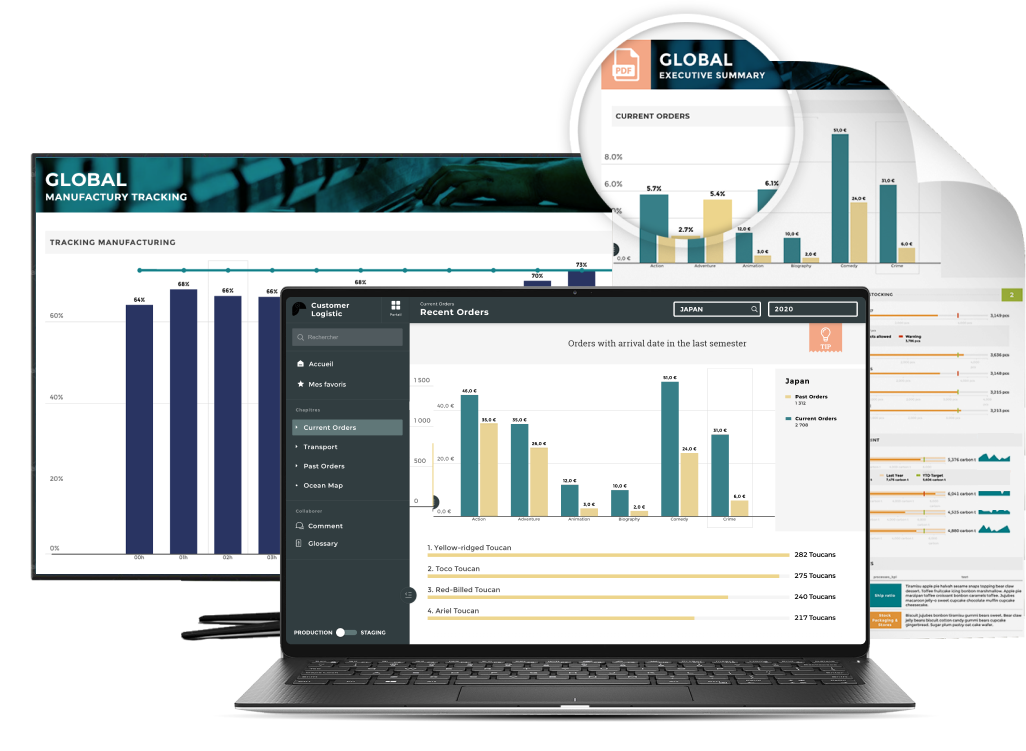Training metrics are quantifiable measures used to track and assess the results of the training process.
Different aspects of learning can be evaluated using training metrics. This can include tracking test scores, the amount of time spent on each activity, as well as how many attempts the learner required to obtain a passing grade. In the end, all of them are aimed at determining the effectiveness of the training.
Training effectiveness refers to the extent to which it improves employee performance; for example, by increasing sales and communication skills, achieving a business goal, or increasing productivity.
To measure training effectiveness, you can use training evaluation metrics. Let’s have a look at what they are and how they can help you with training in your company.
Key employee training metrics
Depending on your training evaluation goals, you may use different training metrics - evaluating training satisfaction and engagement, planning your training budget, improving participation and pass rates, or analyzing business outcomes. In this article, we will discuss the 10 commonly used training metrics.
1. Training cost per employee
This is a straightforward metric, which divides the total cost of training by the number of employees. This can be for a specific program or as a sum of all training done in a particular year. The formula would be:

Consider the following example: your training for the year costs $200,000, and you have 130 employees.
Training cost per employee = $200,000 / 130 = $1,538.46
The training industry, for instance, reported an average annual expenditure of $1,046 per employee. Thus, you are able to determine whether your spending is justified or if you are overspending. Additionally, you can use this metric to plan your training budget for the following year.
2. Learner engagement
Learner engagement measures the amount of time and effort learners invest into the learning process. The result indicates that learners are taking the time to sign up and process the training materials.
In spite of the fact that engagement cannot be measured directly, there are some engagement statistics that can be analyzed. Time spent on modules or courses falls under this category. These features are available in most analytics management systems. A learner's level of engagement increases as they spend more time interacting with the learning platform's features.
However, this may not always be true, as in some cases, learners are just ‘clicking’ through the modules without learning. That’s why, to measure engagement, you should combine it with other metrics such as course completion, satisfaction rating, and employee performance.
3. Training Return on Investment
Return on investment (ROI) measures the efficiency or profitability of training investments. It is usually associated with increased revenue and business impact. Your organization does not need to measure the ROI of every training initiative. Typically, you would only track this key metric for the top 5% most impactful training programs.
One of the most popular ways to measure training return on investment is:

Let’s say you spent $50,000 on training to increase the speed of your customer service reps resolving issues. As a result of this, they were able to increase customer satisfaction and sales, which led to an increase of $150,000 in net profit from sales. Therefore:
($150,000 – $50,000) / 50,000 x 100 = 200% return on investment of training.
4. Training experience satisfaction
This is one of the most popular training metrics to measure and can usually be found in a post-training survey. This survey is designed to determine whether learners are satisfied with their training experience. You can use the Net Promoter Score (1 to 10) with the question, “How likely is it that you would recommend this training session to a friend or peer” to gather feedback and measure training experience satisfaction.
It is an excellent metric to determine whether or not training was successful in the eyes of learners. Any score between 0 and 30 is considered to be good for NPS. A score of more than 30 is considered excellent. A score below 0 is cause for concern.
5. Operational efficiency
As long as training is conducted effectively and addresses the specific skills gaps needed to optimize processes in the workplace, it should increase operational efficiency.
For example, you might currently be missing 30% of your deadlines. If an employee training program is deployed to address this specific issue, there should be a noticeable improvement (e.g., a decrease to at least 15% over time). Operational metrics such as ‘time to repair’, ‘time to recover,’ ‘time to failure,’ can be measured before and after training to note any efficiency improvement.
6. Course enrollment data
The purpose of this is simply to measure the number of employees enrolled in the course. This metric can be used, for example, to improve how employees are communicated training information.
To measure the effectiveness of different images and subject headers used when presenting the training program to employees, you may want to conduct A-B testing using different messages.
Additionally, it specifies whether the training deployed is appropriate for the employees. To increase course enrollment, you can do small things (such as encouraging managers to promote the course to their teams) and observe the improvement over time.
7. Course completion rate
You have launched a new course for your employee training. There were 1,000 employees enrolled in the course, but only 50 completed the course in its entirety. You can determine the course completion rate by examining how much of the course an employee has completed using the following formula:

The course completion rate would be 5%. Gamification and bite-sized content are creative ways to encourage course completion.
8. Learner drop-off rate
Again, this indicates how many employees either began a course and did not complete it or dropped out. It may indicate problems with browser compatibility in online learning platforms or even the quality of training materials. It is ideal to measure where learners dropped off in the course. As a result, you will be able to determine if there are any problems with a particular section of the training.

9. Assessment pass rate and Assessment scores
The assessment pass rate measures how many learners passed or failed a course taken. For example, if 300 employees took a test at the end of a course, and only 65 people passed, that would be a pass rate of 21.6%. Assessment pass rate can be calculated using this formula:

It could indicate that the course assessment was difficult, or it may have been purposely done in this way to filter out the best employees. In the event your pass rates and assessment scores are unexpectedly low, you may be able to determine what caused the problem. In the course of completing the course, have employees forgotten what they learned at the beginning of the course? Did the questions require too much detail or were they unnecessary?
There are times when employees need to retake an assessment until they pass the course. Regulations require these assessment pass rates and scores for reporting on the amount of legal training taken by an organization (such as regulatory training required for compliance).
10. Employee performance post-training
Employee performance post-training looks at the improvement of employee performance over time related to the training. Depending on the complexity of the skill being trained, the impact of training may be apparent immediately or after a longer period of time.
This can be measured by tracking employee performance metrics before and after training, such as the number of sales or first-call resolutions per employee, or the revenue per employee at the organizational level. In the same way, as with training ROI, you should only measure the most impactful pieces of training.
Where do you get this data?
You must look at the following data to obtain the training metrics:
- Analytics Management System – This houses all master data, such as course completion rates, sign-up rates, assessment scores, pass rates and some engagement metrics. All of the information can be found on Toucan in a comprehensive and easy-to-understand format.
- Surveys – This helps you gather data such as satisfaction scores and qualitative data on the effectiveness of your training.
- Focus groups – In order to have a candid and open discussion regarding the training received, it may be useful to conduct employee focus groups.
- Employee performance data – This houses any measure of improvement in performance seen over time as a result of training.
The key to future-proofing your organization is to ensure that your employees are properly trained. Therefore, it is vital that you make sure that the way you are implementing it is bringing you the results that you want. By tracking the right training metrics, you will be able to ensure that this is the case. Using Toucan you are able to track all the right metrics and gain actionable insights to actively improve your employee training programs and process.





